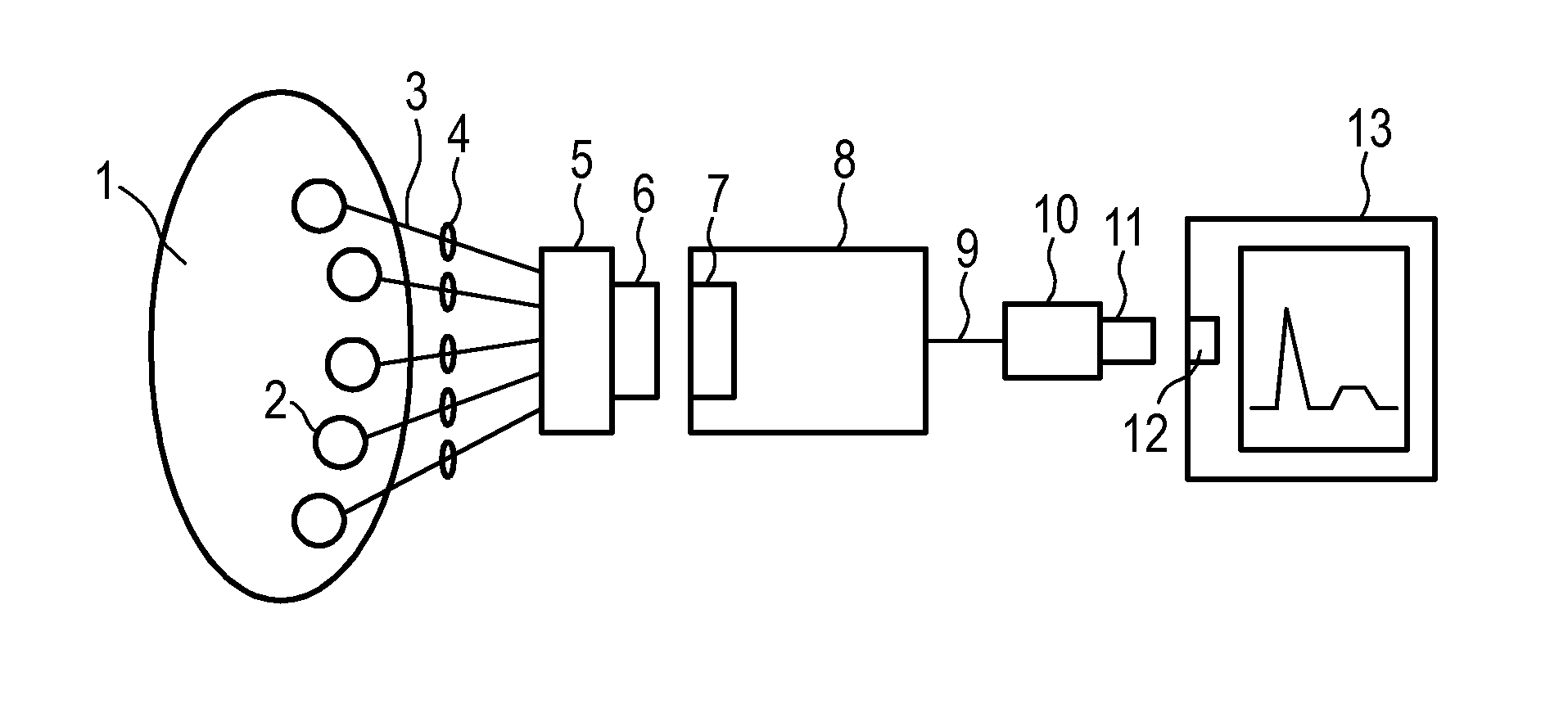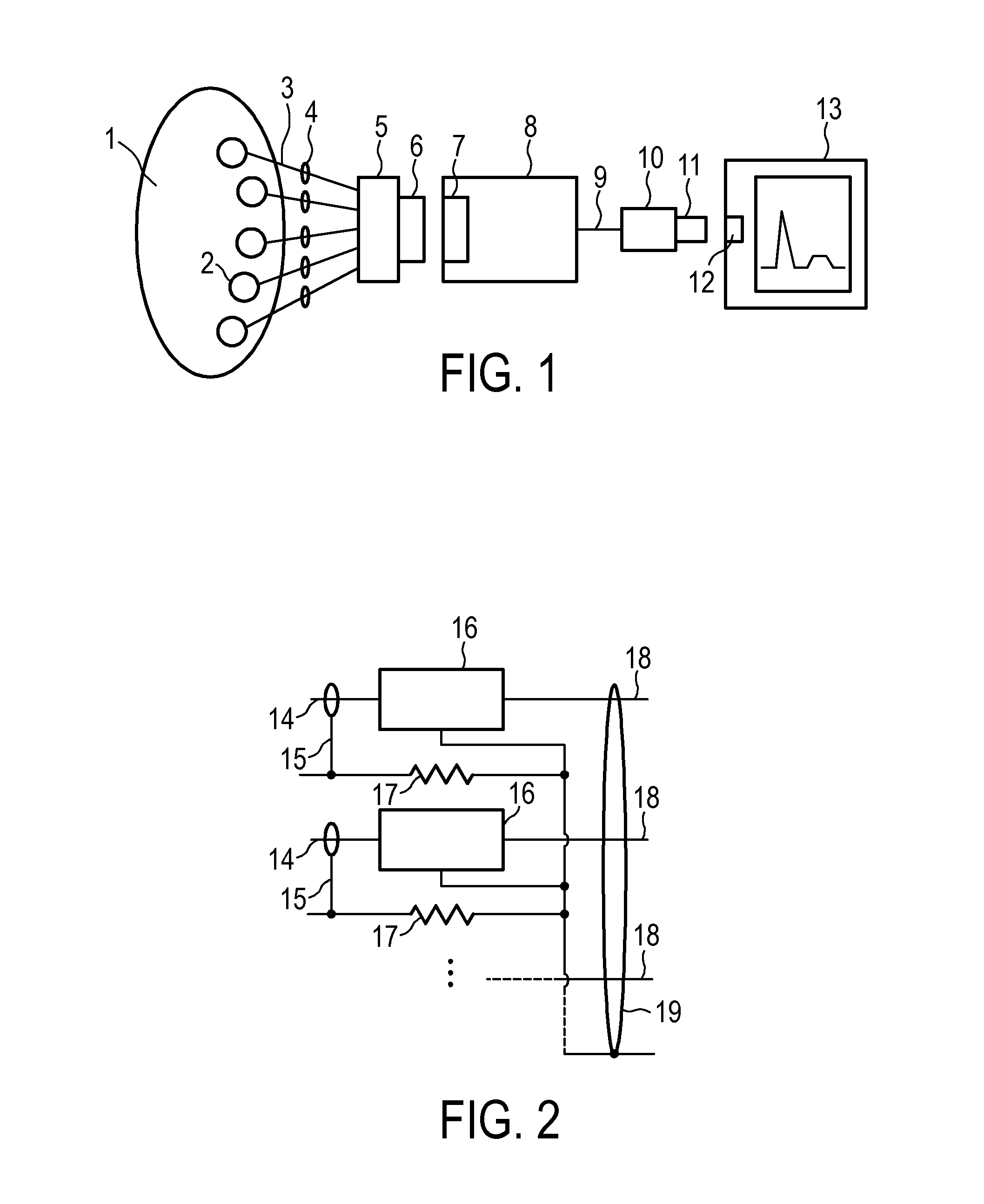Current protection for electrode-based monitoring systems
- Summary
- Abstract
- Description
- Claims
- Application Information
AI Technical Summary
Benefits of technology
Problems solved by technology
Method used
Image
Examples
Embodiment Construction
[0022]In the following embodiment, an enhanced protection against excessive shield currents for patient monitoring devices, such as ECG devices, is described.
[0023]According to the embodiment, shield cable currents can be reduced dramatically when the shields of the lead cable are separated by connecting at least one series resistance into or to the shield conductor(s). These resistors may for example be provided in an ECG trunk cable to allow the usage of uniform lead cables for all applications.
[0024]Usually, the coupling capacitance of the lead cable to 50 / 60 Hz sources is in the range of some picofarads (pF). Under extreme circumstances, it could increase to about 100 pF.
[0025]This results in a coupling impedance which will be in the range of some 1000 MΩ, under extreme circumstances it could decrease to about 30 MΩ. Compared with these values, a resistance of e.g. 10 kΩ will decrease a common mode signal of 100 V and 30 MΩ source impedance—which is an absolute worst case—to onl...
PUM
 Login to View More
Login to View More Abstract
Description
Claims
Application Information
 Login to View More
Login to View More - R&D
- Intellectual Property
- Life Sciences
- Materials
- Tech Scout
- Unparalleled Data Quality
- Higher Quality Content
- 60% Fewer Hallucinations
Browse by: Latest US Patents, China's latest patents, Technical Efficacy Thesaurus, Application Domain, Technology Topic, Popular Technical Reports.
© 2025 PatSnap. All rights reserved.Legal|Privacy policy|Modern Slavery Act Transparency Statement|Sitemap|About US| Contact US: help@patsnap.com


